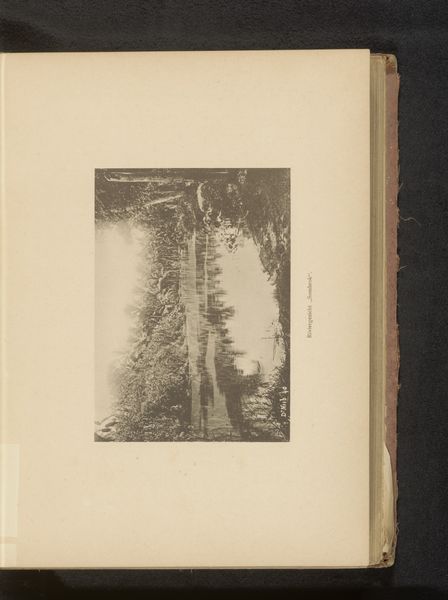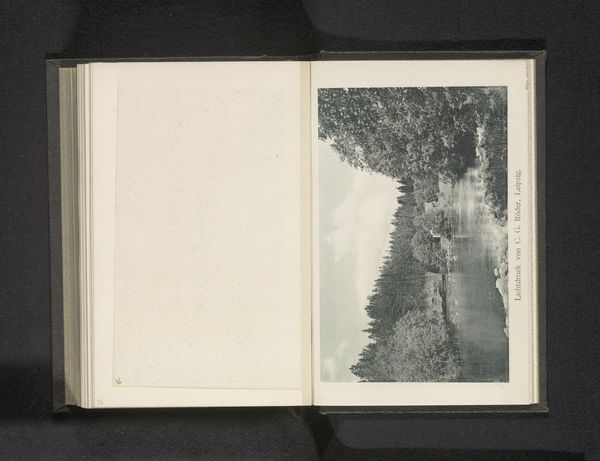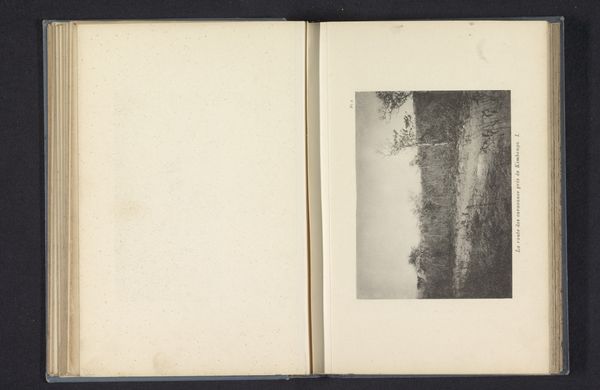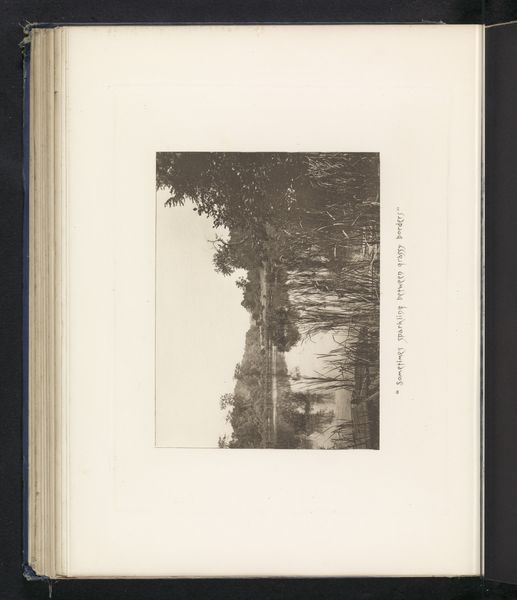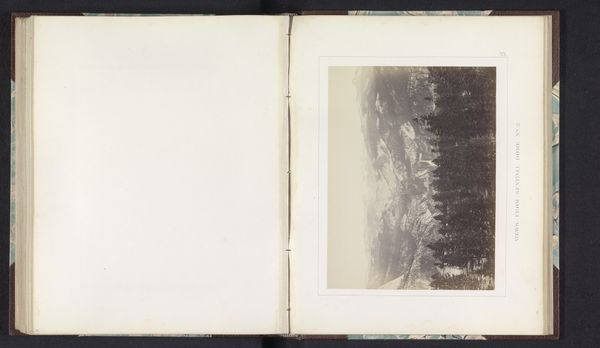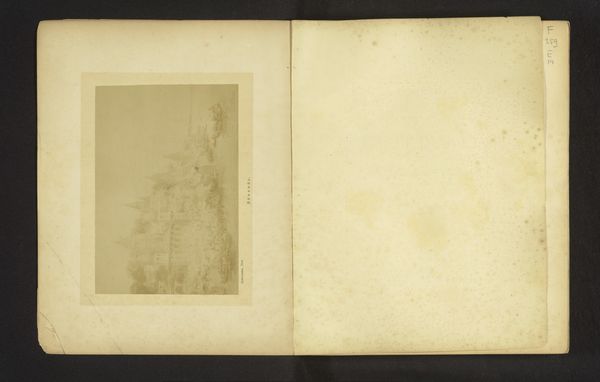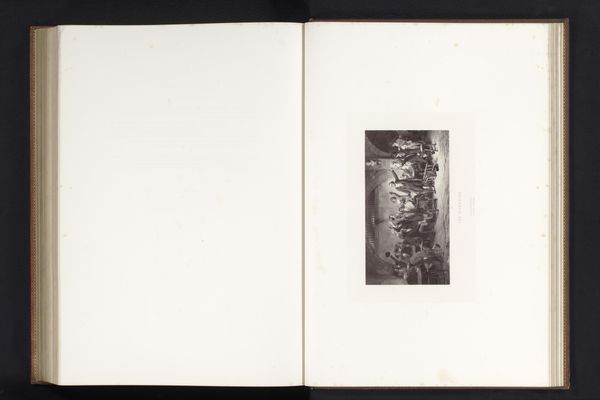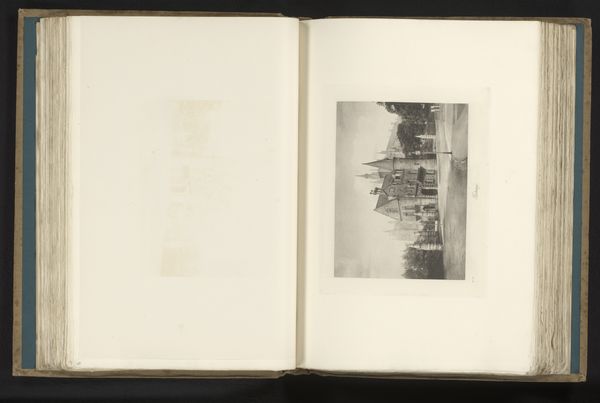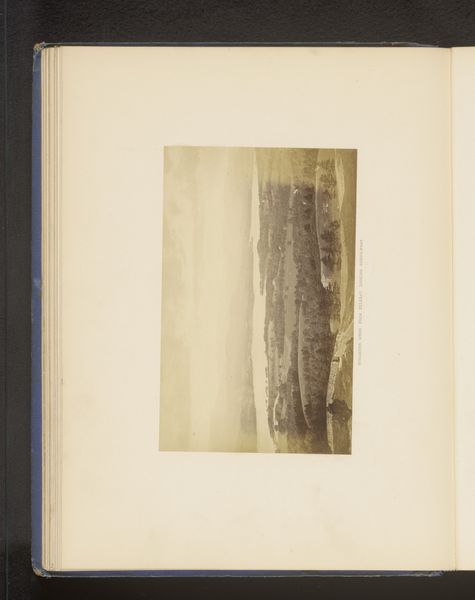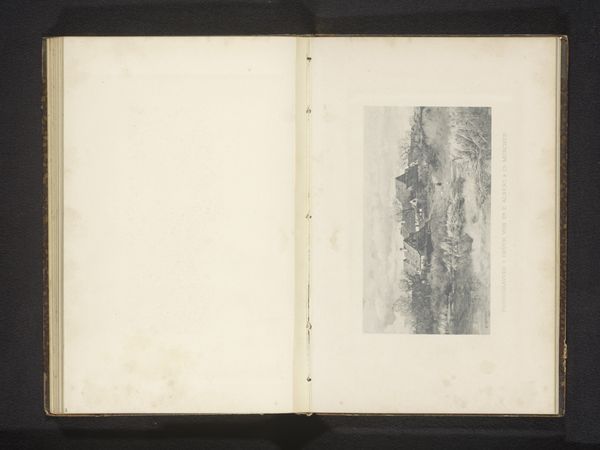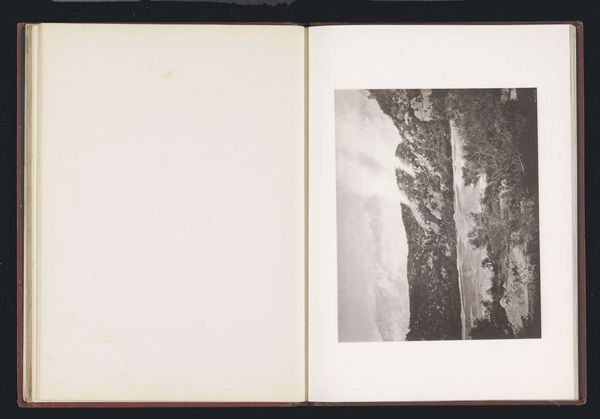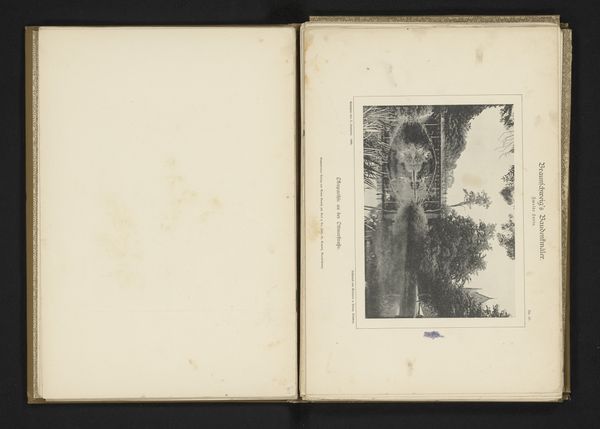
print, photography, gelatin-silver-print
# print
#
landscape
#
photography
#
mountain
#
gelatin-silver-print
Dimensions: height 96 mm, width 158 mm
Copyright: Rijks Museum: Open Domain
Curator: This is Bernhard Johannes's "Berglandschap met een meer," or "Mountain Landscape with a Lake," a gelatin silver print created sometime before 1892. It depicts a pristine alpine lake mirroring the surrounding landscape. Editor: Immediately, I notice the mirrored symmetry, a visual device lending stillness and a sort of intensified reality. The tonal range of the gelatin silver print, from the deep blacks of the trees to the soft grays of the mountains, emphasizes this almost dreamlike quality. Curator: The lake, acting as a symbolic mirror, taps into deeper themes. Throughout history, reflections in water often represented introspection, duality, or even the subconscious mind. Perhaps Johannes is inviting us to see not just a landscape, but a reflection of ourselves within nature. Editor: An interesting point. Formally speaking, the photographic printing process itself becomes relevant. Gelatin silver prints allowed for finer details, but also introduce a level of manipulation, a mediation between the natural scene and the final image we perceive. The very act of fixing the image on paper, of halting the reflection, so to speak, creates tension. Curator: This is very true; furthermore, mountains themselves resonate with powerful symbolism—spiritual aspiration, resilience, the overcoming of obstacles. And, like water, mountains recur often throughout folklore as places of trial or refuge. Consider, then, how the reflected mountain doubles down on that meaning. Editor: I find it interesting to view the repetition of the landscape not merely as reinforcement of some symbolic weight, but rather as the potential collapse of meaning itself. A mirror doesn't provide absolute duplication, but variation. Note the inversion; it reveals a disruption of familiar perceptual frameworks, calling our perception itself into question. Curator: Yes, but that dislocation allows for a deeper appreciation. It forces us to pause and look, thereby opening ourselves up to the layered meanings and symbolism inherent in this particular landscape. Editor: True enough, this photograph invites a sort of dual contemplation—on the natural forms represented, and on the inherent paradoxes contained in representing it photographically at all. Curator: And for me, this piece reminds us of our shared history. Of a fascination, even a spiritual relationship, that connects humans and landscape through representation.
Comments
No comments
Be the first to comment and join the conversation on the ultimate creative platform.
